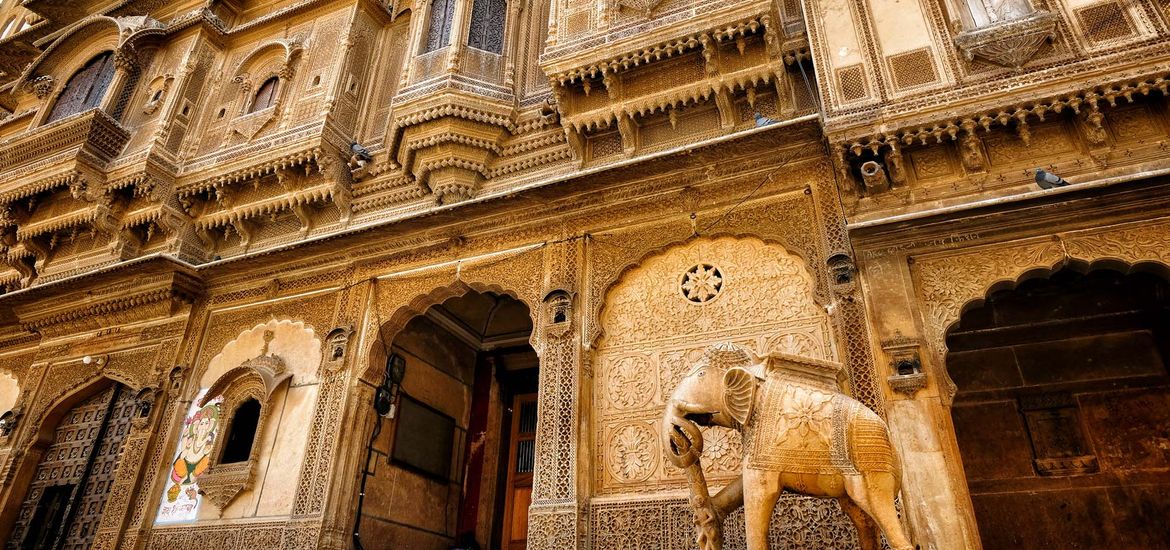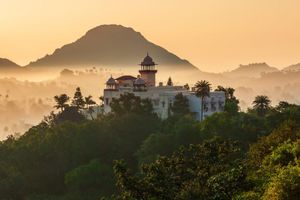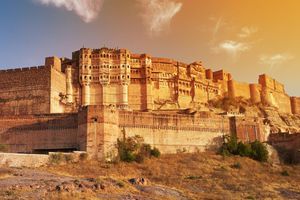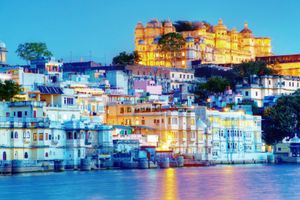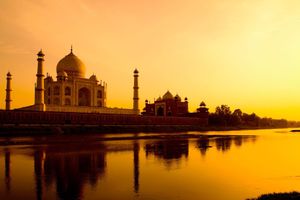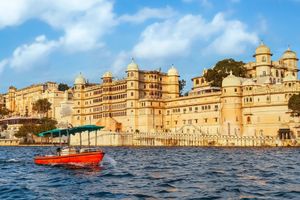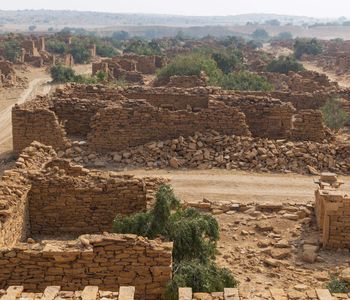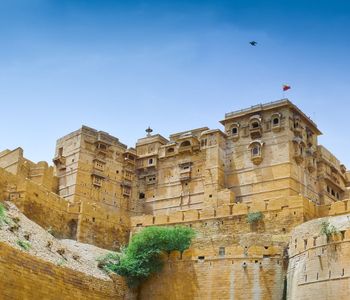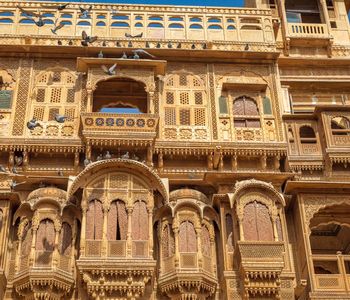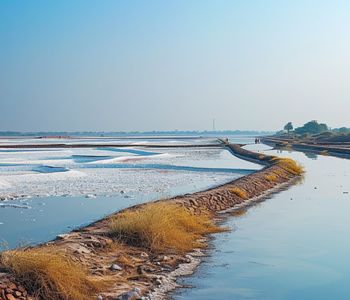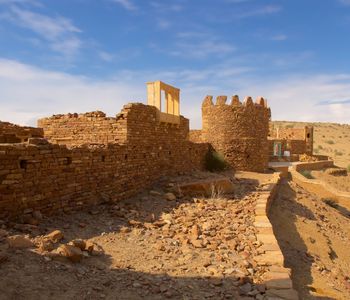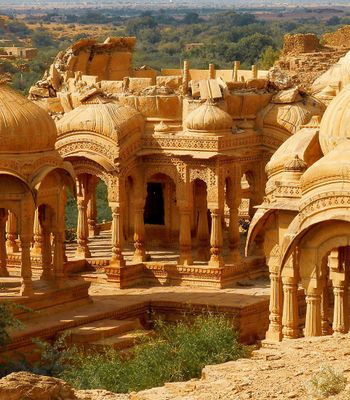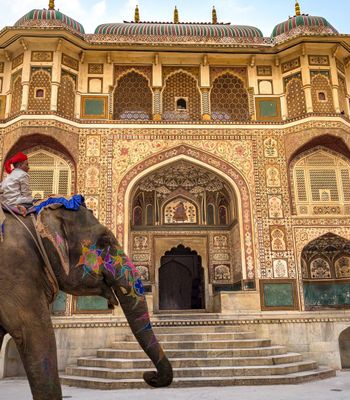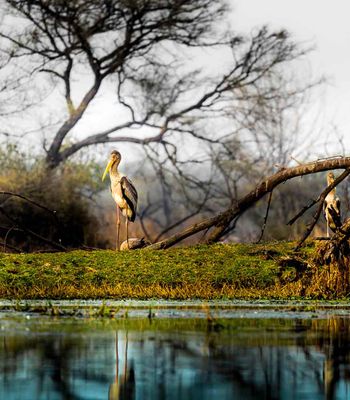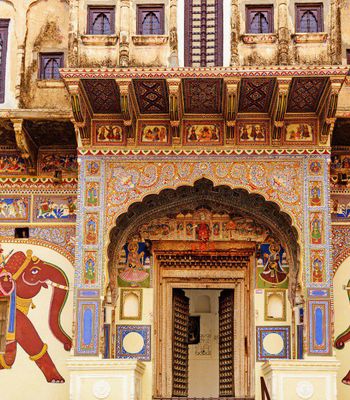Imagine strolling throughout Jaisalmer's golden streets, where architecture recounts stories of a past and history murmurs from every corner. Nestled in the centre of this energetic city is Nathmal Ki Haveli, a mansion that not only highlights the grandeur of Rajasthan's rich past but also captivates visitors with its unique fusion of architectural styles and intricate craftsmanship.
Constructed in the late 19th century, this haveli stands as a testament to artistic brilliance, making it a must-visit for anyone exploring Rajasthan’s cultural tapestry.
Echoes of the Past: The History Behind Nathmal Ki Haveli
Originally commissioned by Maharawal Berisal, the then-ruler of Jaisalmer, Nathmal Ki Haveli housed the Prime Minister of Jaisalmer, Diwan Mohata Nathmal. Built around 1885, the haveli was meant to capture the artistic brilliance and grandeur of the time.
Two gifted architectural brothers, Hathi and Lulu, famed for their extraordinary workmanship, took on the task of realising this vision. Beyond its architectural significance, Nathmal Ki Haveli played a crucial role in shaping Jaisalmer’s socio-political landscape.
As the Prime Minister’s residence, it was a hub for administrative discussions and cultural gatherings. It stood as a silent witness to the changing tides of Jaisalmer’s history, from its days as a thriving trade post on the Silk Route to its transformation into a heritage destination.
A Masterpiece in Stone: The Architectural Wonders of Nathmal Ki Haveli
Reflecting the many cultural influences that have moulded Rajasthan, Nathmal Ki Haveli is a masterful blend of Rajput and Islamic architectural forms. Built from yellow sandstone, the palace radiates gold, particularly in the desert heat, which gives Jaisalmer its moniker, the "Golden City."
Key architectural features include:
- Beautiful Stone Carvings: Detailed carvings of flowers, elephants, soldiers, and complex geometric designs cover the façade. These themes not only accentuate the beauty of the estate but also tell stories of the past.
- Latticed Windows (Jharokhas): The several jharokhas have both practical and decorative value. They provide privacy and let natural light and air flow through, therefore attesting to the careful architectural concerns of the day.
- Asymmetrical Symmetry: Owing to the brothers' concurrent but distinct building activities, the home features an unusual asymmetrical symmetry. Although the general architecture seems consistent, a closer inspection reveals minor variances in architectural components on both sides.
- Interior Frescoes: Beautiful paintings and murals adorn the walls inside, some of which use gold leaf to highlight the grandeur and artistic sensibility of the time.
Beyond the Facade: Hidden Gems and Intriguing Details
While the haveli’s grand exterior is its most striking feature, there are several lesser-known aspects that make it even more fascinating:
Elephant Sculptures
Life-sized sandstone elephants, painstakingly carved to seem to defend the haveli, flank the entryway. Fascinatingly, these sculptures were created so that they appeared to come out of the walls, giving the façade movement.
Contemporary Inspiration
Some of the century-old carvings show goods like bicycles and fans, which were curiosities at the time. This combination of classic and modern components presents a remarkable window into the changing cultural scene of the period.
Private Houses
Note that descendants of the founding family still occupy some of the haveli. While some areas are open to guests, others remain private to help preserve the mansion's living legacy.
Secret Courtyards and Passageways
Beyond the great façade, the haveli features a number of secret courtyards and small corridors. Often disregarded by visitors, these spaces were intended to provide shade and airflow, therefore maintaining the coolness of the inside in extreme desert conditions.
Light and Shadow Play on the Sandstone
The way sunlight interacts with the haveli's golden sandstone façade is among the most magical features of the building. The haveli changes colors as the day goes on; it starts off brilliant golden in the morning and deep amber at sunset. The complex carvings produce dramatic shadows, therefore making every moment beautiful.
The Golden Hour Glow: Best Time to Visit Nathmal Ki Haveli
Extreme temperatures abound in Jaisalmer; summers are hot, while winters are chilly. October to March is the best season to visit Nathmal Ki Haveli since the weather is nice and fit for exploration.
The pleasant daytime temperatures during these months let guests completely enjoy the architectural splendour, free from the discomfort of too-hot conditions. Early morning or late afternoon visits are especially advised since the beautiful golden light during these periods accentuates the warm tones of the sandstone, enhancing the overall appearance of the carvings.
Navigating Jaisalmer: How to Reach Nathmal Ki Haveli
Nathmal Ki Haveli is centrally located in Jaisalmer, making it easily accessible by various modes of transport. Whether you're arriving by air, train, or road, reaching this historic landmark is a seamless experience.
By Air
About 14 kilometres from Nathmal Ki Haveli, Jaisalmer Airport (JSA) is the closest airport. However, flight options are limited, with most services operating seasonally.
If you're flying from major cities like Delhi or Mumbai, you may need to take a connecting flight via Jodhpur Airport, which is about 267 km away. From Jodhpur, you can hire a private taxi (5–6 hours) or opt for a comfortable bus journey to Jaisalmer.
If you're arriving by air, consider booking a window seat—the aerial view of Rajasthan’s golden desert landscape is breathtaking, especially during sunrise or sunset.
By Train
Jaisalmer Railway Station is conveniently close to big cities, including Jodhpur, Jaipur, and Delhi. About 2 kilometres from Nathmal Ki Haveli, the station is easily reachable via auto-rickshaws or taxis.
By Road
Regular bus services run from places like Jodhpur, Jaipur, and Bikaner to Jaisalmer. Private taxis and self-drive options are also available for a more personalised journey. Once in Jaisalmer, the haveli’s central location makes it easily accessible by auto-rickshaw or on foot, allowing visitors to fully immerse themselves in the city’s lively streets.
Nathmal Ki Haveli offers a window into Rajasthan's artistic legacy rather than only a marvel of architecture. Every corner of the haveli reveals a tale of workmanship and royal grandeur, from its finely carved facade to its remarkable asymmetrical form. More than a monument, it is a living testament to Jaisalmer’s golden past.
